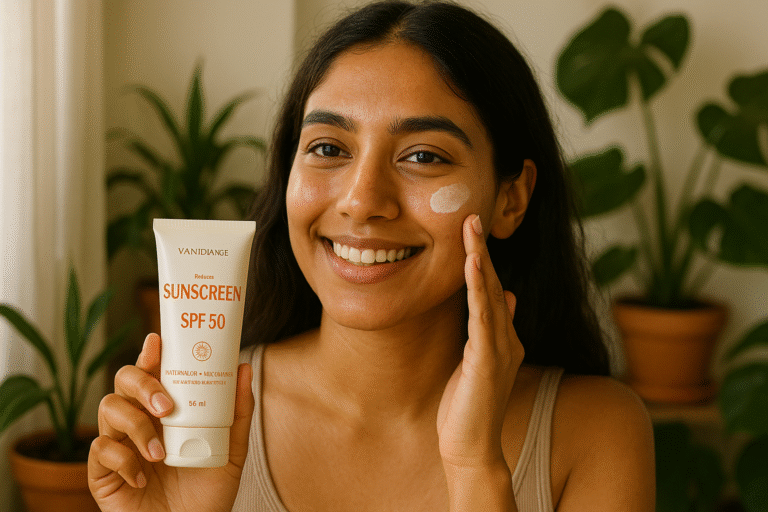Skincare for oily skin requires understanding the basics of excess sebum production. While glands producing too much oil can cause shine, this skin type actually ages better with fewer wrinkles. Genetics, environment, and diet all influence oil production. The good news? An effective oily skin routine needs just three essential steps that control oil without over-drying your skin.
Step 1: Choose the right cleanser for oily skin
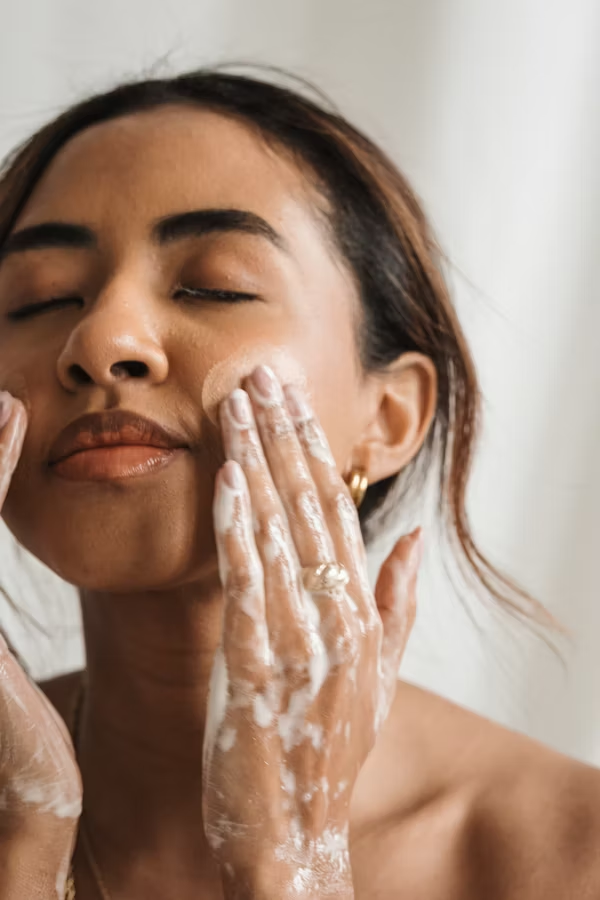
Why gentle cleansers
A common misconception about oily skin is that harsh products are needed to control shine. In reality, gentle cleansers are more effective for long-term skin health. The ideal facial cleanser for oily skin should remove dirt and excess oil without stripping natural oils.
When you use cleansers that are too strong, they remove the important fats and proteins that keep your skin healthy. This makes your skin react by producing more oil to make up for what was lost. So, what starts as an effort to reduce oiliness can lead to a frustrating cycle of more oil production.
After cleaning your skin, it should feel soft and smooth, not dry and tight. This indicates you’ve removed oils and dirt without damaging the protective layer. Gentle foaming cleansers help keep oily skin fresh and healthy while reducing shine, large pores, and breakouts.
Also, gentle cleansers help your skin’s natural protection stay effective. Your skin needs some oil to function properly; the goal isn’t to remove all oil but to maintain a healthy balance. A cleanser supporting this balance is important for your skincare routine. Additionally, proper cleansing helps your skin absorb other treatment products more effectively. If your cleanser keeps your skin barrier healthy, other products like serums and moisturizers can work better and provide improved results for your oily skin problems.
How often should you wash your face?
Finding the right cleansing frequency is crucial for oily skin types. Generally speaking, every person should wash their face both morning and night. This twice-daily routine helps remove excess oil that accumulates while you sleep and throughout the day.
Washing your face too much (more than twice a day) can make your skin oilier. When you wash away moisture, your skin tries to replace it by producing extra oil, which can lead to breakouts. Stick to washing twice daily (morning and night), plus after heavy sweating
Additional cleansing may be beneficial in specific situations:
- After intense exercise
- In extremely hot or humid weather
- After exposure to heavy pollution
In these cases, use micellar water or a gentle cleanser instead of regular face wash to avoid over-cleansing. Consistency in your morning and evening routine with products for oily skin helps regulate sebum production without causing dehydration.
Ingredients to look for in a cleanser
The right ingredients can control oil, prevent breakouts, and balance your skin without over-drying. Look for these key actives:
- Salicylic Acid: Deep-clears pores and reduces oil.
- Niacinamide: Regulates sebum and calms inflammation.
- Clay (Kaolin/Bentonite): Absorbs excess oil gently.
- Tea Tree Oil: Fights acne-causing bacteria (use diluted).
- Kaolin Clay: Gently absorbs excess oil without overdrying, perfect for daily shine control.
- Benzoyl Peroxide: Kills acne bacteria and prevents clogged pores.
What to avoid: harsh soaps and alcohols
Most skin care experts agree that bar soaps are too harsh for the face and should be avoided [3]. Alcohol-based cleansers can also be a problem for oily skin. While it might seem smart to use alcohol to get rid of extra oil, experts say this is not a good idea. Alcohol can dry out your skin too much, and you may end up producing even more oil as your skin tries to replace the lost moisture. You might also see dry or flaky patches on areas that are usually less oily, leading to an uneven skin texture. Here are some ingredients to avoid:- Sodium lauryl sulfate (SLS) and sodium laureth sulfate (SLES): These surfactants can be harsh and drying, as well as irritate and strip the skin of its natural oils [1].
- Formaldehyde: Listed on the Environmental Working Group’s toxic chemical list [1]
- Fragrances: Can trigger allergic reactions and irritation, particularly in those with sensitive skin [3]
Step 2: Hydrate with the right moisturizer
After establishing a cleansing routine, many with oily skin make a mistake by skipping moisturizer. This decision can backfire. Proper hydration is essential for controlling oil, yet it’s often misunderstood or overlooked.
oily skin still needs moisture
One of the most persistent myths in skincare is that oily skin doesn’t need moisturizer. This misconception leads many to skip this vital step, thinking it will only make their skin greasier. Let me clear this up once and for all: oily skin needs hydration.
Even with excess sebum causing shine, oily skin can still lack hydration. Oil and hydration are distinct aspects of skin health, allowing skin to be both oily and dehydrated, which surprises many with this skin type[6].
Best types of moisturizers for oily skin
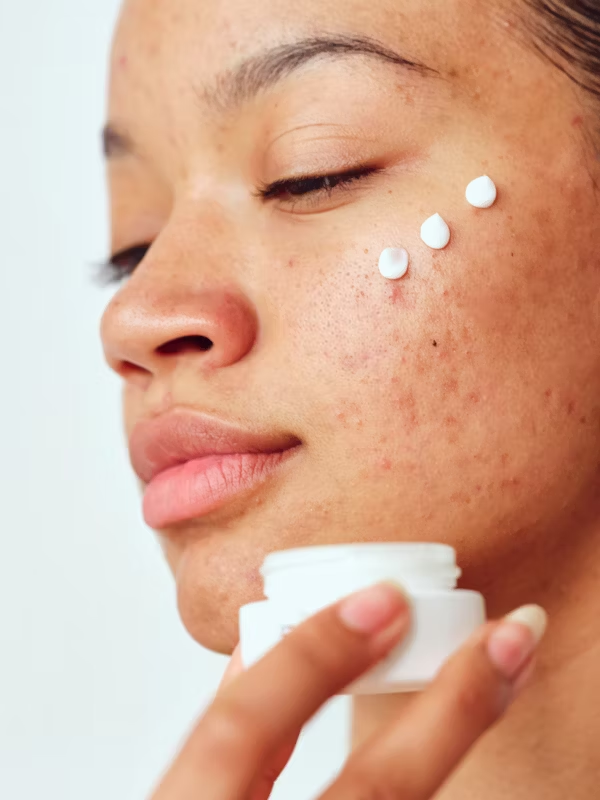
The best moisturizers for oily skin are lightweight and non-comedogenic, preventing clogged pores [6]. This is crucial since oily skin is prone to congestion and breakouts. Look for products labeled for oily skin, as they hydrate without adding shine or acne.
- Gel and gel-cream formulations: These water-based options provide hydration without heaviness. Feel cool when applied and soak in quickly[8].
- Lightweight lotions: Offer slightly more moisture than gels while still maintaining a light feel on the skin. Look for “oil-free” on the label [9].
- Serums with hydrating properties: Serums have strong ingredients and are great for using under a light moisturizer[9].
For daytime use, consider a dual-purpose product that combines moisturizing benefits with sun protection. A 2-in-1 moisturizer with SPF can simplify your routine while ensuring your skin stays protected [9]. Just be sure to choose one that’s specifically formulated for oily skin to avoid unnecessary heaviness or shine.
Nighttime presents a different opportunity for skincare. While sleeping, your skin naturally repairs itself, making this an ideal time to use a dedicated night moisturizer. These formulations can deeply nourish your skin without worrying about daytime shine [9]. They work to repair damage and rejuvenate your complexion while maintaining oil balance.
Among all the options, gel moisturizers stand out as particularly suitable for oily complexions. Their water-based nature provides excellent hydration while maintaining a matte finish. Many gel formulations also contain oil-controlling ingredients that help manage shine throughout the day [5].
When testing a new moisturizer, pay attention to how your skin feels several hours after application. The right product should leave your skin feeling comfortable and balanced, not tight and dry, nor greasy and shiny. Finding this balance may require some trial and error, but the improvement in your skin’s appearance and feel makes the effort worthwhile.
Common mistakes: skipping moisturizer
Skipping moisturizer leads to many problems that go beyond just the appearance of your skin. Without enough moisture, your skin barrier gets weak, which causes more sensitivity and irritation [3]. This weak barrier can’t protect you well from things like pollution, UV rays, and other outside stressors, making your skin more at risk for damage.
Avoiding moisturizer can actually worsen acne[3]. Furthermore, properly hydrated skin heals faster, meaning existing acne lesions resolve more quickly when your skin is well-moisturized.
Key ingredients: niacinamide, hyaluronic acid
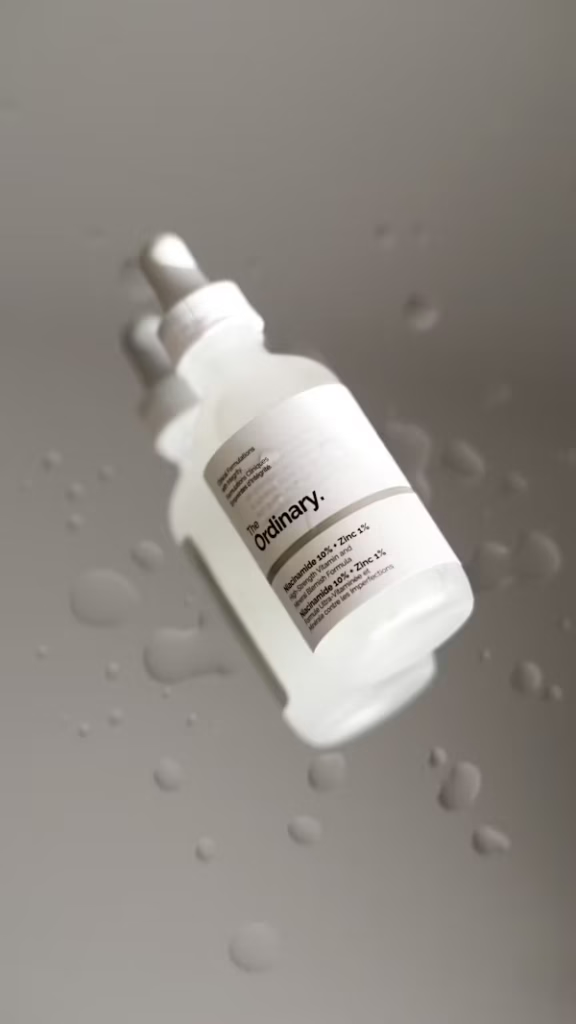
Hyaluronic acid is the other star ingredient for oily skin hydration. This molecule naturally occurs in our skin and can hold up to 1,000 times its weight in water [12]. This remarkable capacity makes it an exceptional hydrator that doesn’t feel heavy or greasy, perfect for oily complexions.
Niacinamide has become increasingly popular in skincare. This versatile ingredient offers numerous benefits, specifically for oily skin. Primarily, niacinamide helps regulate oil production, making it exceptionally valuable for those battling excess shine [2].

Step 3: Always protect with sunscreen
Completing your skincare routine with proper sun protection isn’t just about preventing burns—it’s a crucial step for managing oily skin effectively. Sunscreen plays a vital role in preventing both immediate damage and long-term skin health issues that uniquely affect oily complexions.
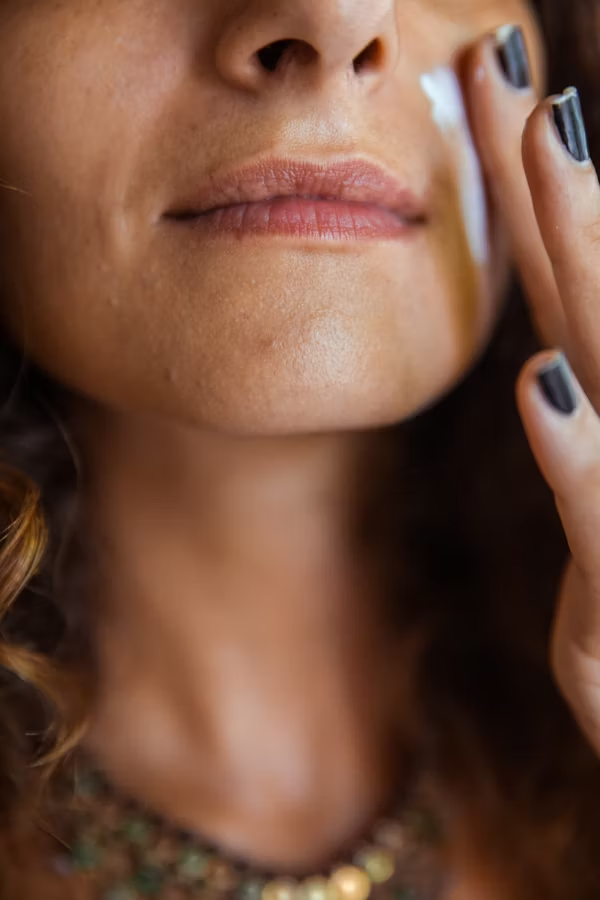
Sun exposure affects oily skin
The sun’s rays can disrupt oily skin balance. While sun exposure may give a temporary matte effect, UV radiation increases sebum production, leading to more oil over time.
Excessive sun worsens acne and breakouts by overworking sebaceous glands. UV exposure exacerbates pigmentation and dark spots, particularly acne scars. Sun exposure dries and hardens skin, disrupting exfoliation and clogging pores, fostering acne-causing bacteria and future breakouts.
Choosing the right SPF for oily skin
For effective protection, always select a sunscreen with at least SPF 30, which blocks about 97% of UVB rays [15]. Yet for oily skin, the formulation matters just as much as the protection level. Look for sunscreens specifically labeled as “mattifying” or “oil-control” that are designed to absorb excess oil throughout the day [16].
Texture is crucial gel and lotion formulations are better for oily skin than thick creams. The ideal sunscreen offers broad-spectrum protection against UVA and UVB rays while feeling lightweight on your skin.
Oil-free and non-comedogenic options
The term “non-comedogenic” is your best friend when choosing sunscreen for oily skin. These formulations are specifically designed not to clog pores, which helps prevent breakouts [17]. Similarly important is finding oil-free options that won’t add extra shine to your complexion.
Beneficial ingredients to look for include:
- Niacinamide: Regulates oil production and brightens skin
- Zinc oxide: Offers natural sun protection with mattifying properties
- Silica: Helps absorb excess oil throughout the day
- Hyaluronic acid: Provides lightweight hydration
Your skin may need a more hydrating moisturizer in winter or a mattifying sunscreen in summer. Oily skin becomes manageable once you understand its needs. This three-step approach helps maintain balance without overwhelming your skin or schedule. Your naturally glowing complexion awaits – minus the excess shine.

